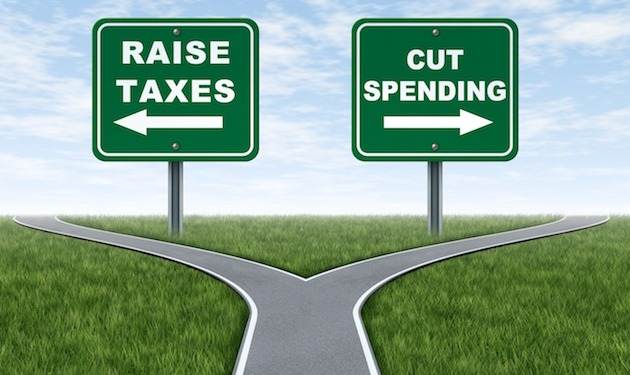16 February 2017
By Stephen Koukoulas
The treasurer, Scott Morrison, appears to be having something of a Gough Whitlam moment. Not in terms of far-reaching social and economic reform, but rather a realisation that the size of government needs to increase. The electorate is demanding a certain base level of healthcare, education, disability care, roads, defence, infrastructure and all manner of goods and services.
Morrison is talking about the need to raise taxes to ensure these government services are provided while simultaneously moving the budget towards surplus, which is an essential element to avoiding the credit rating downgrade that appears to be just around the corner.
He is explicitly acknowledging that, to keep voters happy with decent services, spending must remain above 25% of GDP and perhaps needs to rise further, towards record highs.
Prior to the Whitlam government in the early 1970s, government spending and revenue was generally at, or a little below, 20% of GDP.
With the Whitlam reforms, this rose to about 25%, and apart from the swings in line with the business cycle and policy changes over the past 40 years, it has remained around 25%. It has not reverted to pre-Whitlam levels. Not gone close.
The Myefo estimates released in December showed government spending was forecast above 25.2% of GDP in every year of the forward estimates. This includes the so-called “zombie” measures from the extreme 2014 budget, which are likely to be jettisoned in the planning for the 2017 budget in May.
These zombie measures were heavily skewed to government spending cuts, which means their exclusion from the budget will boost the government spending numbers by 0.1% or 0.2% of GDP per annum. In other words, it appears that spending will already be nearer 25.5% of GDP and rising.
There are a range of issues associated with government funding of health, education, disability care, defence and infrastruture which are baked into the budget cake – that is, with an ageing population and a burgeoning demand for services, spending is likely to be higher than assumed in the Myefo. Anyone trying to cut these services will have no hope at the next election.
With that background, if the budget is to be balanced and moved to surplus over the medium term (which it should), it will be left to the revenue side to do the heavy lifting in budget repair.
Which begs the question – which taxes should be hiked?
The company tax cuts seem to be an indulgence that is poorly timed and poorly targeted given this medium-term requirement for the government to collect revenue. It should be dropped. There is a case for making permanent, or even widening, the income tax surcharge on high-income earners. This is fair and raises a decent amount of cash. A hike to the GST is simple and a powerful revenue earner but there is no political will to look at that as the source of extra funding. The no-brainers are limiting negative gearing and cutting capital gains tax concessions, which yield sizable revenue, especially over the more medium term.
The other tax area which is being floated is hiking the Medicare levy. This is simple and potentially raises a lot of money in a straightforward way.
These are the tax changes that are going to be needed if Australia is to maintain and further improve the level of education, health and disability services. The sooner the government realises this and gets on with it, the better.
The choice is tax hikes or cuts.
Tax hikes are not so hard. The electorate can live with them if they can see where the money is going. Look at the minimal political pain associated with tax increases over the past few years on tobacco, the re-indexation of petrol, the high income tax for debt reduction purposes, the rise in the Medicare levy to part-fund the NDIS, and the ongoing efforts to crack down on multinational tax minimisation.
It seems the size of government is about to get bigger which will no doubt have the fiscal zealots screeching. But it seems to be what the electorate wants and frankly, it is no bad thing if it means the level of services can be maintained at a high level for all members of society.

